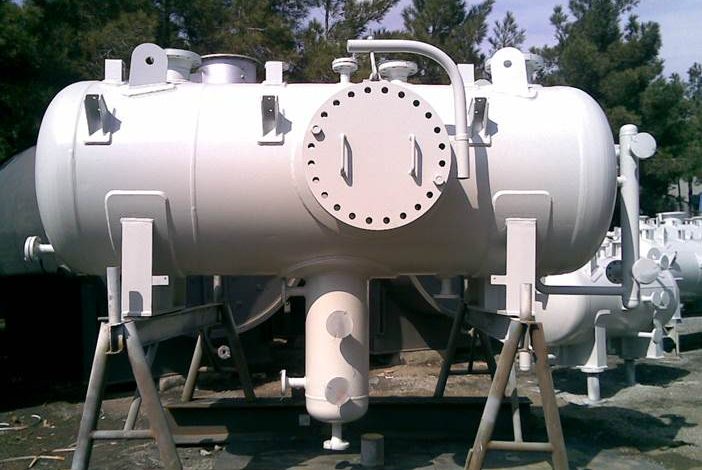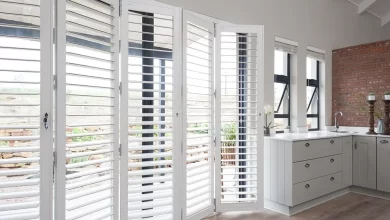Api 510 Pressure Vessel Inspections: Assessing Welding And Fabrication Quality

If you work in the oil and gas industry, you know how important it is to maintain the integrity of your equipment. One crucial aspect of this maintenance is ensuring that your pressure vessels are up to code and functioning properly. That’s where API 510 Pressure Vessel Inspections come in.
These inspections assess the welding and fabrication quality of your pressure vessels, helping you identify any potential issues before they become major problems. When it comes to pressure vessel inspections, there’s no room for error. The consequences of a faulty vessel can be catastrophic, both in terms of safety and financial impact.
That’s why it’s essential to choose an inspection provider who has the expertise and experience necessary to perform thorough assessments. In this article, we’ll take a closer look at API 510 Pressure Vessel Inspections, including what they entail, why they’re important, and how to choose the right inspection provider for your needs.
Key Takeaways
– API 510 Pressure Vessel Inspections are crucial for assessing welding and fabrication quality.
– Inspections can prevent costly equipment failures and provide a valuable record of the vessel’s condition over time.
– Material selection and adherence to safety standards are important in evaluating fabrication processes.
– Choosing an inspection provider requires considering certification requirements, experience, qualifications, pricing, reputation, and communication.
Importance of API 510 Pressure Vessel Inspections
You can’t afford to skip API 510 Pressure Vessel Inspections if you want to ensure the safety and reliability of your equipment. These inspections are crucial in assessing the benefits and risks associated with operating pressure vessels.
Without regular inspections, you run the risk of catastrophic failures that could result in property damage, injury, or even death. Benefits of these inspections include identifying potential problems before they become major issues. This allows for timely repairs, which can extend the life of your equipment and improve its performance.
On the other hand, skipping these inspections can lead to serious risks such as corrosion, cracks, or leaks that can cause significant harm to people and property. With this in mind, it’s important not only to schedule regular API 510 Pressure Vessel Inspections but also to take heed of their results when making decisions about welding quality assessment.
Welding Quality Assessment
Now, let’s take a look at how to determine if the welding is up to par. Welding defects can cause significant damage to pressure vessels, which is why it’s crucial to assess the quality of welds during API 510 inspections.
Here are three non-destructive testing techniques that inspectors use:
1. Ultrasonic Testing: This technique uses high-frequency sound waves to detect internal flaws in welds. It’s an effective method for detecting cracks, porosity, and lack of fusion.
2. Radiography Testing: This technique involves using X-rays or gamma rays to produce images of welds on film. The images can reveal defects such as incomplete penetration and undercutting.
3. Magnetic Particle Testing: This technique detects surface cracks and other flaws by applying magnetic particles onto the weld surface and then magnetizing them.
After determining whether the welding is up to standards using these techniques, inspectors move on to assessing fabrication quality.
Fabrication Quality Assessment
When it comes to pressure vessel performance, fabrication quality is crucial. Evaluating the fabrication processes used in creating a pressure vessel is crucial to ensuring its overall quality and safety. This includes assessing factors such as material selection, welding techniques, and post-weld heat treatment. This evaluation is necessary to ensure that the vessel can withstand the operating conditions it will be subjected to.
Please adjust the paragraph structure in the Input to logically group complete sentences on their own lines, with a double new line after. Also, use contractions.
Importance of Fabrication in Pressure Vessel Performance
Fabrication quality plays a crucial role in determining the performance of pressure vessels. The following are four items that highlight the importance of fabrication in pressure vessel performance:
– The role of materials: The choice of materials for pressure vessel fabrication determines its strength, durability, and resistance to corrosion. Materials with poor quality or defects can lead to serious safety hazards.
– Welding techniques: Welding is an essential process in pressure vessel fabrication. Proper welding techniques ensure that joints are strong and free from defects such as porosity, cracks, and lack of fusion.
– The impact of fabrication defects: Defects such as weld discontinuities, laminations, and misalignments can cause leaks, structural failure, and even explosions in worst-case scenarios.
– Safety regulations: Fabrication processes must adhere strictly to safety standards set by regulatory bodies such as ASME (American Society of Mechanical Engineers) to ensure safe operation.
Evaluating fabrication processes involves assessing welding procedures, material testing methods, and inspection techniques used during the manufacturing process. It also includes verification that all safety standards have been met before commissioning the pressure vessel for service.
Evaluating Fabrication Processes
By ensuring proper material selection, welding techniques, and adherence to safety standards, a pressure vessel’s performance can be evaluated for optimal function. Welding plays a critical role in the fabrication process of pressure vessels. The quality of welds determines the strength and durability of the vessel, as well as its ability to withstand extreme operating conditions.
Welding techniques have evolved over time, and it’s important to choose the right technique for each specific application. Quality control measures such as non-destructive testing (NDT) are also crucial in evaluating welding quality. This includes x-rays, ultrasonic testing, magnetic particle inspection, and dye penetrant testing.
By using these methods, any defects or inconsistencies in welding can be identified early on and corrected before they become major issues. Ensuring that welding is done correctly is just one step towards ensuring that a pressure vessel can withstand operating conditions without compromising safety or functionality.
Ensuring Vessel Can Withstand Operating Conditions
Now that you’ve evaluated the fabrication processes of a pressure vessel, it’s time to ensure that the vessel can withstand operating conditions. One important aspect of this is assessing the welding techniques used in the construction of the vessel. Welding quality is crucial to ensuring that a vessel can safely operate under high pressure and temperature conditions.
API 510 inspectors will evaluate welds for defects such as cracks, porosity, and incomplete penetration. In addition to evaluating welding quality, inspectors must also consider material properties when assessing a vessel’s ability to withstand operating conditions. Material selection is an essential part of designing and constructing a pressure vessel, and API 510 inspectors must be knowledgeable about various materials and their properties.
Inspectors will look at factors such as corrosion resistance, strength, ductility, and toughness when evaluating material suitability for specific applications. By carefully evaluating welding techniques and material properties, API 510 inspectors can ensure that a pressure vessel can safely operate under demanding conditions without compromising integrity or safety.
Moving on from ensuring the safety of vessels during operations by assessing its fabrication processes, let’s now take a closer look at how these inspections benefit industries that rely heavily on them.
Benefits of API 510 Inspections
One of the advantages of API 510 inspections is that they can help prevent costly equipment failures. By evaluating pressure vessels, inspectors can identify potential issues before they become major problems. This preventative approach can save companies money in the long run by avoiding expensive repairs or even replacements.
In addition to preventing equipment failures, API 510 inspections also provide a valuable record of a vessel’s condition over time. This information can be used to track trends and make informed decisions about maintenance and repairs.
Choosing the right inspection provider is crucial to ensuring that these benefits are realized effectively.
Choosing the Right Inspection Provider
When selecting an inspection provider, it’s important to consider their experience and expertise in the specific industry and equipment being evaluated. Here are some factors to keep in mind when choosing the right inspection provider for your API 510 pressure vessel inspections:
1. Certification Requirements: Look for an inspection provider that is certified by recognized organizations such as the American Society of Mechanical Engineers (ASME) or the National Board of Boiler and Pressure Vessel Inspectors. This ensures that they have met rigorous standards and have the necessary qualifications to perform inspections.
2. Inspection Cost: While cost shouldn’t be the sole determining factor, it’s essential to choose a provider that offers competitive pricing without compromising on quality. Consider obtaining quotes from several providers before making a final decision.
3. Reputation: Do your research, read reviews, or ask for references from previous clients to ensure that you’re working with a reputable inspection provider.
4. Communication: Choose an inspection provider who is responsive and communicates effectively throughout the entire process, from scheduling to delivering the final report. Clear communication can help prevent misunderstandings or delays during inspections.
By considering these factors, you can select an inspection provider that meets your needs and ensures reliable assessments of welding and fabrication quality during API 510 pressure vessel inspections at a reasonable cost while meeting certification requirements for safety compliance.
Conclusion
In conclusion, choosing the right inspection provider for your API 510 pressure vessel inspections is crucial to ensuring the safety and reliability of your equipment. It’s important to find an experienced and qualified inspector who can properly assess both welding and fabrication quality.
Through a thorough assessment, you can identify areas that need improvement or repair, ultimately extending the life of your pressure vessel and reducing the risk of failure.
By investing in regular API 510 inspections, you can also benefit from increased efficiency and cost savings. Early detection of issues can prevent costly repairs down the line, while identifying opportunities for optimization can improve productivity and reduce downtime.
Ultimately, by prioritizing safety and quality through regular inspections, you’re making a sound investment in both your equipment and your business.





